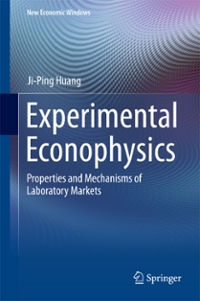Please help with A, B and C :)
A)
On a certain island there are only two goods, wheat and milk. The only scarce resource is land. There are 1,000 acres of land. An acre of land will produce either 9 units of milk or 16 units of wheat. Some citizens have lots of land; some have just a little bit. The citizens of the island all have utility functions of the form: U(M, W) = MHZ * W1/2 At every Pareto optimal allocation, 0 every consumer's marginal rate of substitution between milk and wheat is . O all citizens consume the same commodity bundle. O total milk production is 4,500 units. O every consumer's marginal rate of substitution between milk and wheat is 1. 0 every consumer's marginal rate of substitution between milk and wheat is 4/5. O the number of units of milk produced equals half of the number of units of wheat produced. O total milk production is 8,000 units. O total milk production is 5,000 units. O the number of units of milk produced equals the number of units of wheat produced. On a certain island there are only two goods, wheat and milk. The only scarce resource is land. There are 1,000 acres of land. An acre of land will produce either 10 units of milk or 16 units of wheat. Some citizens have lots of land; some have just a little bit. The citizens of the island all have utility functions of the form: U(M, W) = M*W. At every Pareto optimal allocation, 0 every consumer's marginal rate of substitution between milk and wheat is 1. 0 total milk production is 5,000 units. 0 the number of units of milk produced equals the number of units of wheat produced. 0 all citizens consume the same commodity bundle. Every consumer has a red- money income and a blue- money income and each commodity has a red price and a blue price. You can buy a good by paying for it either with blue money at the blue price or with red money at the red price. Harold has 12 units of red money and 10 units of blue money to spend. The red price of ambrosia is 1 and the blue price of ambrosia is 2. The red price of bubble gum is 1 and the blue price of bubble gum is 1. If ambrosia is on the horizontal axis, and bubble gum on the vertical axis, then Harold's bud get set is bounded by 0 two line segments one running from (0, 22) to (5, 12) and the other running from (5, 12) to (17, 0). 0 two line segments, one running from (O, 15) to (12, 10) and the other running from (12, 10) to (24, 0). O a vertical line segment and a horizontal line segment, intersecting at (12, 10). O two line segments, one running from (O, 22) to (12, 10) and another running from (12, 10) to (17, 0). O a vertical line segment and a horizontal line segment, intersecting at (5, 12)









